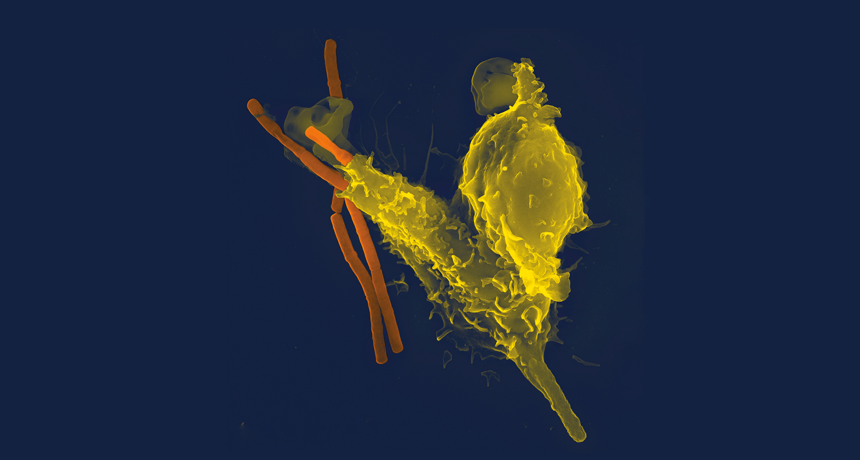antimicrobial A substance used to kill or inhibit the growth of microbes. This includes naturally derived chemicals, such as many antibiotic medicines. It also includes synthetic chemical products, such as triclosan and triclocarban. Manufacturers have added some antimicrobials — especially triclosan — to a range of sponges, soaps and other household products to deter the growth of germs.
bacteria (singular: bacterium) Single-celled organisms. These dwell nearly everywhere on Earth, from the bottom of the sea to inside other living organisms (such as plants and animals).
cell The smallest structural and functional unit of an organism. Typically too small to see with the unaided eye, it consists of a watery fluid surrounded by a membrane or wall. Depending on their size, animals are made of anywhere from thousands to trillions of cells. Most organisms, such as yeasts, molds, bacteria and some algae, are composed of only one cell.
chemical A substance formed from two or more atoms that unite (bond) in a fixed proportion and structure. For example, water is a chemical made when two hydrogen atoms bond to one oxygen atom. Its chemical formula is H2O. Chemical also can be an adjective to describe properties of materials that are the result of various reactions between different compounds.
computer model A program that runs on a computer that creates a model, or simulation, of a real-world feature, phenomenon or event.
cytokine A substance secreted by certain cells of the immune system which the body uses to have some particular controlling effect on other cells. Examples include interferons, interleukins and growth factors.
digest (noun: digestion) To break down food into simple compounds that the body can absorb and use for growth. Some sewage-treatment plants harness microbes to digest — or degrade — wastes so that the breakdown products can be recycled for use elsewhere in the environment.
immune (adj.) Having to do with the immunity. (v.) Able to ward off a particular infection. Alternatively, this term can be used to mean an organism shows no impacts from exposure to a particular poison or process. More generally, the term may signal that something cannot be hurt by a particular drug, disease or chemical.
immune system The collection of cells and their responses that help the body fight off infections and deal with foreign substances that may provoke allergies.
infection A disease that can spread from one organism to another. It’s usually caused by some type of germ.
marrow (in physiology and medicine) Spongy tissue that develops inside of bones. Most red blood cells, infection-fighting white blood cells and blood platelets form within the marrow.
microbe Short for microorganism. A living thing that is too small to see with the unaided eye, including bacteria, some fungi and many other organisms such as amoebas. Most consist of a single cell.
model A simulation of a real-world event (usually using a computer) that has been developed to predict one or more likely outcomes. Or an individual that is meant to display how something would work in or look on others.
neutrophil A type of white blood cell released by the immune system. It gobbles up wastes and release chemicals that can digest cells, including germs.
prey (n.) Animal species eaten by others. (v.) To attack and eat another species.

